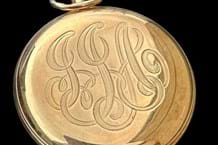
A view of the 17th-century Dutch tapestries in the Tapestry room at Kelmscott Manor, the Grade I-listed 16th and 17th century house in Oxfordshire.
The four 17th-century Dutch tapestries depicting the Life of Samson were part of the house before Arts & Crafts specialist and social campaigner William Morris moved to the Grade I-listed 16th and 17th century house.
Kelmscott Manor, in the village of Kelmscott, Oxfordshire, was the country home of Morris and his family from the 1870s. It stayed in the Morris family until the death of his daughter May Morris in 1938 is now owned by the Society of Antiquaries of London.
The latest funding project is to conserve the Samson tapestries and return its Tapestry Room to the way it looked during Morris’ lifetime.

A view of the 17th-century Dutch tapestries in the Tapestry room at Kelmscott Manor, the Grade I-listed 16th and 17th century house in Oxfordshire.
With the help of the National Lottery Heritage Fund, Historic Houses Foundation, The Mercers’ Company, The Blavatnik Family Foundation, The LG Harris Trust and generous donations of benefactors and companions, the house has raised 86% of the total £306,000 needed to conserve the tapestries and reinstate the Tapestry Room.
Martin Levy, of dealership H Blairman & Sons and chairman of the Kelmscott Manor Campaign Group, said: “We need your help to raise the final £40,000 required to conserve the fragile tapestries and allow visitors to experience the room as it was in the 19th century. It will also ensure young people have the opportunity to learn about the inspiring nature of Kelmscott Manor and how the tapestries worked their magic on Morris.”





